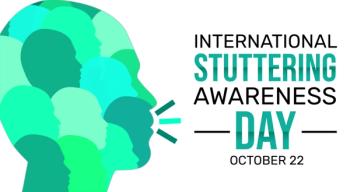
Psychiatric Comorbidities in Epilepsy: Implications for Clinical Practice
Psychiatric disorders affect 1 in 3 individuals with epilepsy—and their etiology is multifactorial.
Psychiatric disorders represent a major source of disability for individuals with epilepsy. This is reflected in the new International League Against Epilepsy (ILAE) definition of epilepsy as a disorder of the brain that is characterized not only by recurrent seizures, but also by its neurobiological, cognitive, and psychosocial consequences.1
Epidemiologic studies have shown that 1 in 3 individuals with epilepsy have a lifetime diagnosis of any psychiatric disorder, and 1 in 4 patients have a currently active psychiatric disorder.2 Among adults, depression is 2.7 times more frequent than in the general population, and psychotic disorders are up to 7.8 times more frequent when looking only at temporal lobe epilepsy.2
In children with epilepsy, there is an obvious emphasis on developmental disorders like attention-deficit/hyperactivity disorder (ADHD) and autism spectrum disorder (ASD), but all psychiatric disorders have been reported.2 Up to 43% of children with epilepsy have at least 1 psychiatric comorbidity with overall odds ratios of 10.7 for ASD, 5.4 for ADHD, 2.3 for anxiety disorders, and 1.8 for depression.3
Reasons for such a high prevalence of psychiatric disorders in epilepsy are multiple, and they are both psychosocial and biological. Epilepsy continues to be a highly stigmatized condition, leading to discrimination and marginalization. The cooccurrence of another stigmatized condition (like a psychiatric disorder) can lead to a vicious cycle that is responsible for underutilization and poor access to psychiatric care, also known as double stigma.4
However, the nature of the association is more complex than that. In fact, epidemiological studies have shown a clear bidirectional relationship: Epilepsy is associated with an increased risk of psychiatric disorders, but psychiatric disorders are associated with a 2- to 3-times increased risk of epilepsy.5 The pathophysiology underlying this has not been entirely elucidated. Neuroimaging studies have identified network abnormalities, particularly within the limbic system shared by epilepsy and major psychiatric disorders like depression and schizophrenia.6,7 Low serotonin levels, hyperactive hypothalamic-pituitary-adrenal axis, high cortisol levels, and downregulation of γ-aminobutyric acid (GABA) receptors in the hippocampi have also been described as potential neurobiological mechanisms.8
Clinical Presentations
Psychiatric symptoms in epilepsy can present in many different clinical scenarios such as peri-ictal symptoms, side effects of epilepsy treatments, and comorbid psychiatric disorders. It is well-known that patients with epilepsy can experience a wide range of behavioral changes either before or after a seizure. These are attributed to the brain network changes operating during specific seizure types. Additionally, psychiatric symptoms may be due to epilepsy treatments, such as antiseizure medications (ASMs) or epilepsy surgery. Conversely, vagus nerve stimulation (VNS) has been shown to improve outcomes for both epilepsy and mood.
Psychiatrists need to be aware that the boundaries between these scenarios are often blurred, as patients may develop symptoms due to multiple contributing factors. In fact, individuals with a psychiatric disorder are also at risk for psychiatric side effects of ASMs, and they may present a worsening of their background psychiatric condition during the postictal phase. The first challenge is, therefore, to identify the different contributing factors in order to develop the best management plan for the individual patient.
Peri-ictal symptoms: Despite many historical notes and several anecdotal reports, the exact prevalence of peri-ictal psychiatric symptoms is largely unknown. Postictal psychoses (PIP) are probably those with the most literature.9 PIP seem to have a point prevalence of 2% and represent around 25% of all cases of psychosis in epilepsy. They are typically observed in temporal lobe epilepsy, they can last for a few weeks, and they are associated with higher rates of violent behaviors and suicide attempts than interictal psychoses. For this reason, PIP need to be promptly recognized and managed. Nonpsychotic postictal symptoms (eg, depression, suicidal ideation, and anxiety) are largely unrecognized because they are short-lasting (usually 24 hours) and difficult to identify for nonexperts; however, they seem to occur in up to 45% of patients with drug-resistant focal epilepsy.2
Psychiatric side effects of ASMs: It is now recognized that 1 in 6 individuals with epilepsy develop ASM-related psychiatric side effects. Nonpsychotic reactions are the most frequent, although only 1 in 7 cases of psychosis in epilepsy are related to ASMs.10 In 2008, the United States Food and Drug Administration (FDA) issued an alert to health care professionals about an increased risk of suicidal ideation and suicide behavior in individuals treated with ASMs. In 2013, an ad-hoc ILAE task force published an expert consensus statement pointing out the complexities of the relationship between suicide and epilepsy.11 Suicidality in epilepsy is multifactorial, and different variables are involved—not just the medications. Sodium channel blockers seem to be less frequently associated with psychiatric side effects, but no robust head-to-head trials provide strong evidence of this.2 For this reason, clinicians should consider the possibility of psychiatric side effects with any ASM in predisposed individuals, such as those with psychiatric comorbidities.
Phenomenology of Psychiatric Disorders
The phenomenology of psychiatric disorders in epilepsy has been a matter of debate for decades. Individuals with epilepsy may develop psychiatric disorders that are clinically identical to those in individuals without epilepsy. Descriptions of some epilepsy-specific psychiatric syndromes date back to 19th-century literature of Emil Kraepelin and Eugen Bleuler.
In more recent times, several authors have tried to support the notion that epilepsy-specific psychiatric disorders like the so-called interictal dysphoric disorder (IDD) exist. However, a cross-sectional, case control study pointed out that even if a diagnosis of IDD is technically possible in around 20% of patients with epilepsy, the same diagnosis is possible in an equal proportion of patients without epilepsy.12
It is now established that some patients develop psychiatric syndromes characterized by atypical features poorly captured by conventional classification systems, and such atypical features are largely due to a combination of organic and epilepsy-specific components like peri-ictal symptoms and psychiatric reactions to ASMs.9
Management of Psychiatric Disorders in Epilepsy
Psychiatrists must always bear in mind that full remission should always be the goal of any psychiatric intervention. There is no room for a dismissive approach driven by the sometimes intractable nature of the underlying neurological disorder.
Current evidence on the management of psychiatric comorbidities in epilepsy is limited. There is, however, no reason to believe that guidelines for treatment of psychiatric disorders in the general population may not be valid in epilepsy. It seems reasonable, therefore, to follow standards of care in psychiatry, taking into account the specific needs of individuals with epilepsy (eg, drug-interactions between psychotropic drugs and ASMs, as well as seizure risk).
The management plan should consider a combination of interventions depending on the origin of symptoms. In fact, while guidelines of treatment of psychiatric disorders should be adopted for psychiatric comorbidities, seizure control is the obvious long-term intervention for peri-ictal symptoms and drug optimization for side effects of antiseizure medications.
For individuals with psychogenic nonepileptic seizures (PNES), psychoeducation and psychological interventions still represent first-line treatments. Explaining the diagnosis and educating individuals and caregivers about the differences between epilepsy and PNES is extremely important. However, there are no studies on the treatment of PNES in patients with comorbid epilepsy.
Regarding the use of antidepressants, selective serotonin reuptake inhibitors (SSRIs) can be considered first-line treatment when a pharmacologic treatment is needed.13 ASM with inducing properties like carbamazepine, phenytoin, or phenobarbital can reduce the blood levels of all antidepressants. However, the only clinically relevant interaction is that with bupropion, for which blood levels can be reduced by up to 90% when combined with carbamazepine.2 Psychiatrists should also bear in mind that the prescription of antidepressants with AMSs that have a similar spectrum of side effects (eg, weight gain, sedation, sexual dysfunction, hyponatraemia) may be associated with a potentiation of those side effects.
Regarding seizure risk, antidepressants have long been thought to be associated with an increased risk of seizures. It is now established that this is not a class effect and SSRIs are not associated with an increased risk of seizures,13,14 while clomipramine, maprotiline, and bupropion immediate release present an increased risk.14 Data on SNRIs as well as newer antidepressants are less systematic, though promising.
Data on antipsychotics in epilepsy are almost nonexistent despite the fact that this class of medications is used in several clinical contexts, from psychoses to challenging behavior in individuals with learning disabilities and autism. For this reason, internationally accepted guidelines for treatment of psychotic disorders should be adapted while taking into account the specific issues of individuals with epilepsy, such as interactions with ASMs and increased risk of side effects.15
Regarding interactions, ASMs with inducing properties reduce blood levels of all antipsychotics.16 This interaction is particularly evident for quetiapine, where the prescription with carbamazepine can lead to undetectable blood levels of quetiapine even at dosages of 700 mg.16 Although valproate is generally considered an enzyme inhibitor, it also mildly induces the metabolism of olanzapine, aripiprazole, clozapine, and quetiapine.16 Because the clinical relevance of this interaction is not certain, it should be considered on an individual basis.
Antipsychotics do not seem to affect blood levels of ASMs. As discussed for antidepressants, psychiatrists should bear in mind that combining drugs with a similar spectrum of side effects (eg, weight gain, sedation, QT prolongation, aplastic anemia) could lead to a potentiation of such side effects.
Finally, regarding the seizure risk of antipsychotics, clozapine showed a 9.5-times increased risk compared with placebo,14 and such a risk is dose- and titration-dependent.17 Olanzapine and quetiapine also seem to carry some risk, although to a lesser extent than clozapine. Other antipsychotics—especially risperidone—do not seem to increase the risk of seizures compared with placebo.14 Data on newer antipsychotics are still very limited.
Regarding ADHD, response rates for methylphenidate in children with ADHD and epilepsy range between 65% and 83% whereas only anecdotal evidence is available for atomoxetine and amphetamines.18 There is not much literature on potential interactions, but they seem to be unlikely. Regarding seizure risk with this class of medication, there is now enough literature suggesting that there is no increased risk of seizures with ADHD medication.18,19
Concluding Thoughts
Psychiatric disorders affect 1 in 3 individuals with epilepsy. Their etiology is multifactorial, involving both psychosocial and biological factors. The biological factors may share common pathophysiology with major disorders such as depression and schizophrenia. Clinical presentations can be atypical because of the presence of peri-ictal symptoms and psychiatric side effects of ASMs. Management of psychiatric comorbidities can be guided by standard treatment protocols for that condition, taking into account the potential of drug interactions with ASMs and seizure risk with some psychotropic medications.
Dr Mula is affiliated with the Institute of Medical and Biomedical Education, St George’s University of London and the Atkinson Morley Regional Neuroscience Centre, St George’s University Hospitals NHS Foundation Trust, London, United Kingdom.
References
1. Fisher RS, Acevedo C, Arzimanoglou A, et al.
2. Mula M, Kanner AM, Jetté N, Sander JW.
3. Aaberg KM, Bakken IJ, Lossius MI, et al.
4. Mula M, Kaufman KR.
5. Hesdorffer DC, Ishihara L, Mynepalli L, et al.
6. Elkommos S, Mula M.
7. Allebone J, Kanaan R, Wilson SJ.
8. Kanner AM.
9. Mula M.
10. Chen Z, Lusicic A, O'Brien TJ, et al.
11. Mula M, Kanner AM, Schmitz B, Schachter S.
12. Mula M, Jauch R, Cavanna A, et al.
13. Mula M, Brodie MJ, de Toffol B, et al.
14. Alper K, Schwartz KA, Kolts RL, Khan A.
15. Agrawal N, Mula M.
16. Mula M.
17. Williams AM, Park SH.
18. Auvin S, Wirrell E, Donald KA, et al.
19. Brikell I, Chen Q, Kuja-Halkola R, et al.
Newsletter
Receive trusted psychiatric news, expert analysis, and clinical insights — subscribe today to support your practice and your patients.













